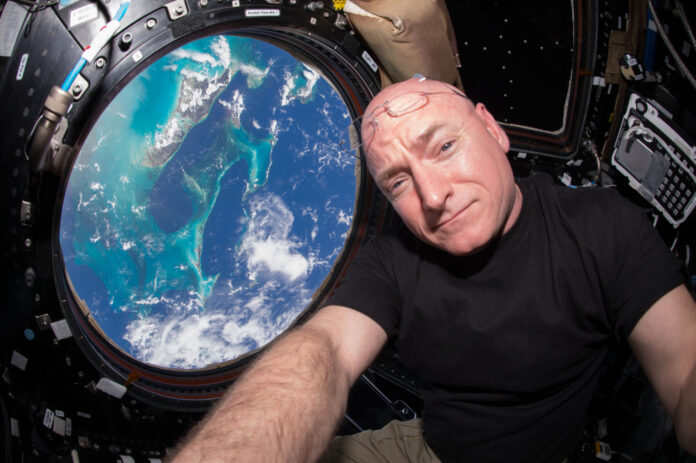- A group of researchers compared health data from a retired astronaut and an elite endurance swimmer.
- They compared the effects of long-distance swimming and extreme-duration spaceflight on the heart.
- Results showed a reduction in the size of the heart in space, despite low-intensity exercise; and even in water.
A study published in the journal Circulation offers new insight into the effects of long-term weightlessness on the human heart. The researchers analyzed health data from astronaut Scott Kelly’s time in space, and swimmer Benoît Lecomte’s swim across the Pacific Ocean in 2018. The team of scientists aimed to investigate how the heart adapts in space. And whether these effects are similar to those experienced during long-distance swimming. Although Lecomte completed his expedition on Earth, the prone swimming technique that he utilized offsets gravity’s effects. Thus, the water immersion acts as a model for studying weightlessness.
Between March 2015-March 2016, Astronaut Scott Kelly spent almost a year in space. During his 340 days-long stay aboard the International Space Station, he exercised 6 days a week doing a combination of cycling, treadmill, and resistance exercises.
In 2018, Benoît Lecomte swam across the Pacific Ocean; a distance of 2,821 kilometers. He swam an average of 5.8 hours per day for a total of 159 days; with breaks of 7 and 32 days due to bad weather.
Doctors performed various tests for both the individuals before and after their extreme endeavour. This included Doppler echocardiograms and MRI scans. Researchers expected that the low-intensity exercise performed by both men would keep their hearts from shrinking. However, that was not the case.
The Heart Shrinks in Space and in Water
Results showed a reduction in the size of the left ventricles for both Kelly and Lecomte. Kelly lost 0.74 grams of heart mass per week while Lecomte’s left ventricle decreased in mass by 0.72 grams per week. Moreover, both men suffered an initial drop in the diameter of their left ventricles at the start of their journey.
The heart is remarkably plastic and especially responsive to gravity or its absence. Both the impact of gravity as well as the adaptive response to exercise play a role, and we were surprised that even extremely long periods of low-intensity exercise did not keep the heart muscle from shrinking
Dr. Benjamin D. Levine, M.D., senior author
Although the heart became smaller, it did not become weaker. According to Dr. Benjamin D. Levine, the study’s senior author, there was no alterations to the function of the heart.
Normally, the Earth’s gravity maintains the heart’s size and helps it pump blood through the vessels. When we’re upright, the pull of the gravitational force causes the veins and the heart to work extra hard as it pumps blood in an upward direction. However, in weightlessness situations, such as in space or during swimming, the pressure of gravity is gone. Thus, the heart does not require extra pressure to pump blood upwards. This results in the heart shrinking.
The hearts returned to their normal size in both the men after their return to the ground. Researchers aim to further analyze MRI scans of Lecomte’s heart to assess whether the long-term effects of weightlessness can be reversed. Dr Levine also plans to study more about astronauts and the changes to their hearts on short and long flights into space.
Reference:
Circulation. 2021;143:00–00. DOI: 10.1161/CIRCULATIONAHA.120.050418




